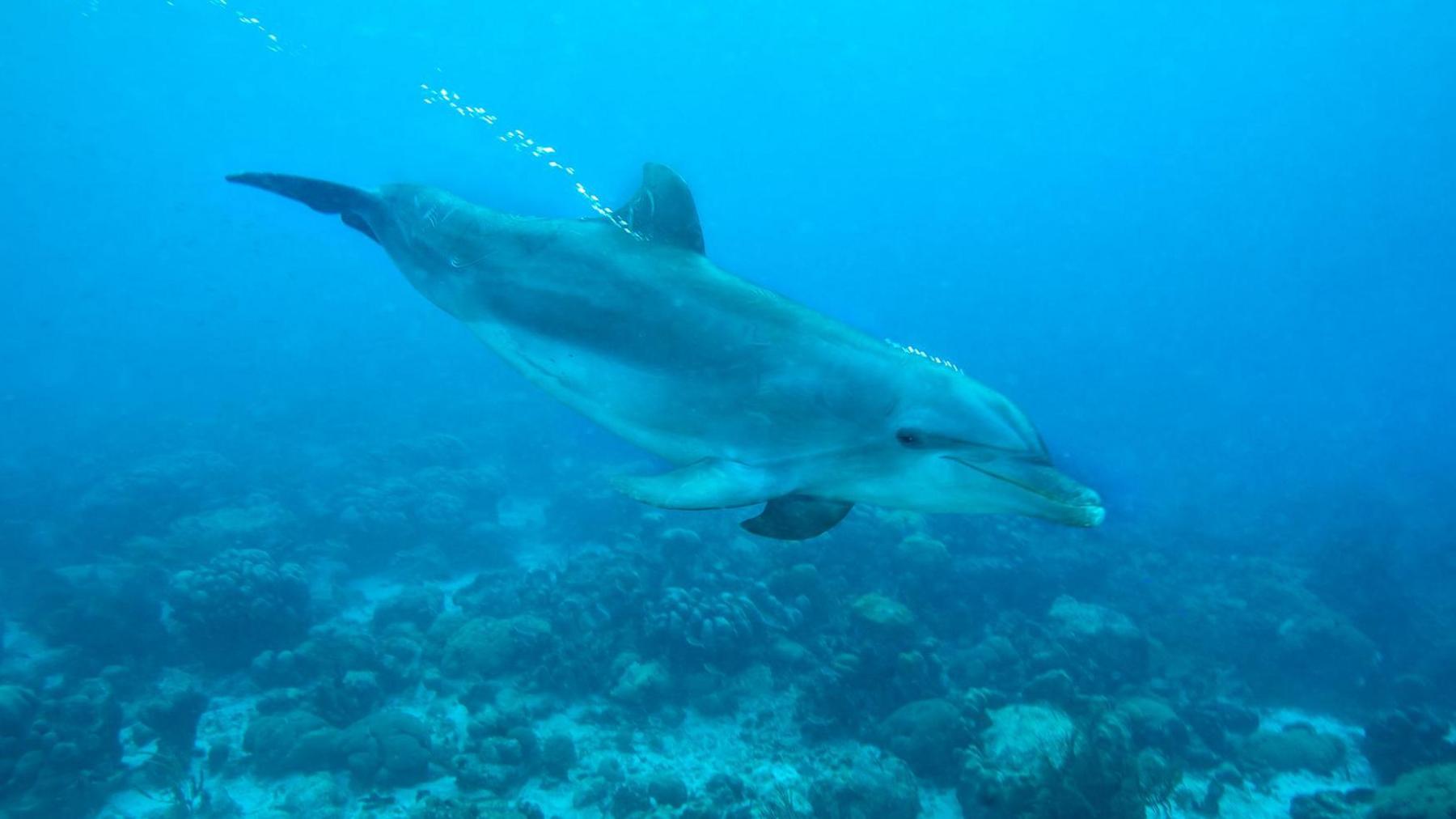The tool that can track dolphins by their 'regional accents'

"Ey up me duck": Dolphins sound different depending on where they live in the world
- Published
Just like humans, dolphins can sound very different depending on where they live.
Now a tool has been developed which can track them by their 'regional accents'.
Dr Julie Oswald from the University of St Andrews' Scottish Oceans Institute has made a splash with her tool created using artificial intelligence, or AI.
It's known as the Real-time Odontocete Call Classification Algorithm - or Rocca for short.
Rocca can categorise dolphin calls by species and comes in different versions linked to different geographical areas.
More fin-tastic dolphin stories!
Bottlenose dolphins 'smile' at their friends
- Published3 October 2024
Dolphins can be shy - just like humans!
- Published19 October 2021
Rare black and white dolphin spotted
- Published7 February 2024
How many regional accents do dolphins have?

Rocca sounds like very so-fish-ticated technology!
There are around 42 species of dolphin and they use hundreds of different sounds to communicate - like clicks and whistles.
Dolphins develop region-specific accents, meaning a bottlenose dolphin in the North Sea may make completely different sounds compared with one in the Pacific Ocean.
They learn to copy the sounds they hear from a young age and according to Dr Oswald, some develop a "signature whistle" to announce who they are.
Scientists can study them using underwater microphones called hydrophones, capturing sounds as dolphins pass by.
But analysis of these sounds can be difficult.
"We can use visual observations and hydrophones to capture audio, but we can't easily match those sounds to specific dolphin species," says Dr Oswald.
How does Rocca work?

Rocca uses machine learning to identify small differences in the dolphins' sounds, which it matches to a species using special settings.
This allows the tool to identify the type of species that's in a certain area.
It helps conservationists identify dolphin species more accurately and assess the impact of human activities, such as fishing.
Dr Oswald is currently working on Rocca so that it can be used to track other species in places like West Africa and the Mediterranean. Scientists and conservationists are also being trained up so they can use Rocca too.
More stories from under the sea!
- Published16 October 2024

- Published2 September 2024

- Published3 October 2021

